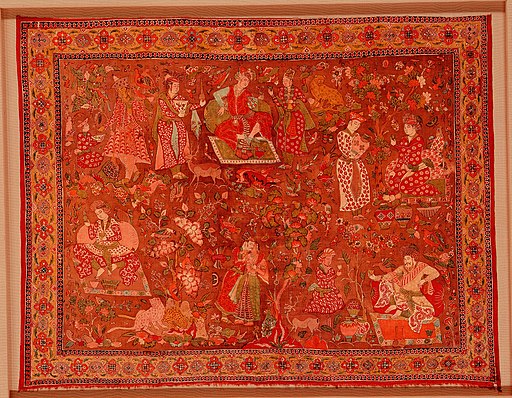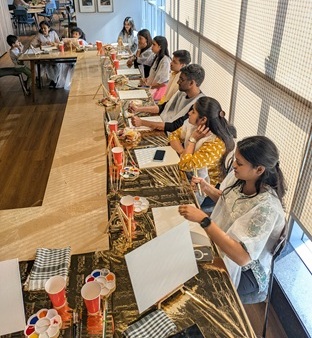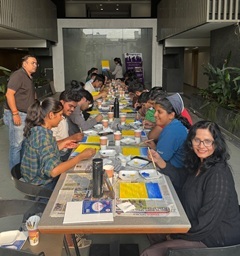Decorate with a pen


Kalamkari is an ancient Indian hand-painted or block-printed textile art form that originated in the southern part of India, specifically in the states of Andhra Pradesh and Tamil Nadu. The word “Kalamkari” literally means “decorate with a pen,” referring to the traditional use of a bamboo or date palm stick (kalam) dipped in natural dyes to create intricate designs on fabric. The art form has a rich cultural history and has been practiced for thousands of years, with evidence of Kalamkari textiles dating back to the 3rd century BC.
Kalamkari is a unique art form that is known for its intricate designs and rich, vibrant colors. Some of the specialties of this traditional art form include:

The towns of Srikalahasti and Machilipatnam are considered the main centers of Kalamkari production. In these regions, the traditional art form has been passed down from generation to generation, and many skilled artisans still continue to practice the ancient techniques. In recent years, Kalamkari has gained popularity in other parts of India and around the world, and it is now widely recognized as a symbol of India’s rich cultural heritage and artistic tradition.
There is a demand for Kalamkari art both in India and internationally. Its intricate designs and rich, vibrant colors make it a popular choice for textiles and decor. Many people appreciate the cultural significance of Kalamkari and the fact that it is a completely handmade process, with each piece being a unique work of art. The demand for Kalamkari has also increased as people seek out traditional and sustainable products, and natural dyes are becoming more popular.
For some Kalamkari artists, being able to practice and make a living from their art can bring them happiness and a sense of fulfillment. By continuing the tradition of Kalamkari and passing it down to future generations, artists can also take pride in preserving their cultural heritage. On the other hand, the nature of the work can be challenging and physically demanding, and the income generated from it may not always be sufficient for a stable livelihood. Nevertheless, the increasing demand for Kalamkari and recognition of its cultural significance can help to support the livelihoods of Kalamkari artists and provide them with financial stability.
Kalamkari can be made more popular by promoting and raising awareness about the art form, its cultural significance, and the traditional techniques used to create it. Some ways to do this include:
By promoting and raising awareness about Kalamkari, we can help to preserve this unique and valuable cultural heritage and support the livelihoods of Kalamkari artists.
Image credit:

Create, Connect, Collaborate!
